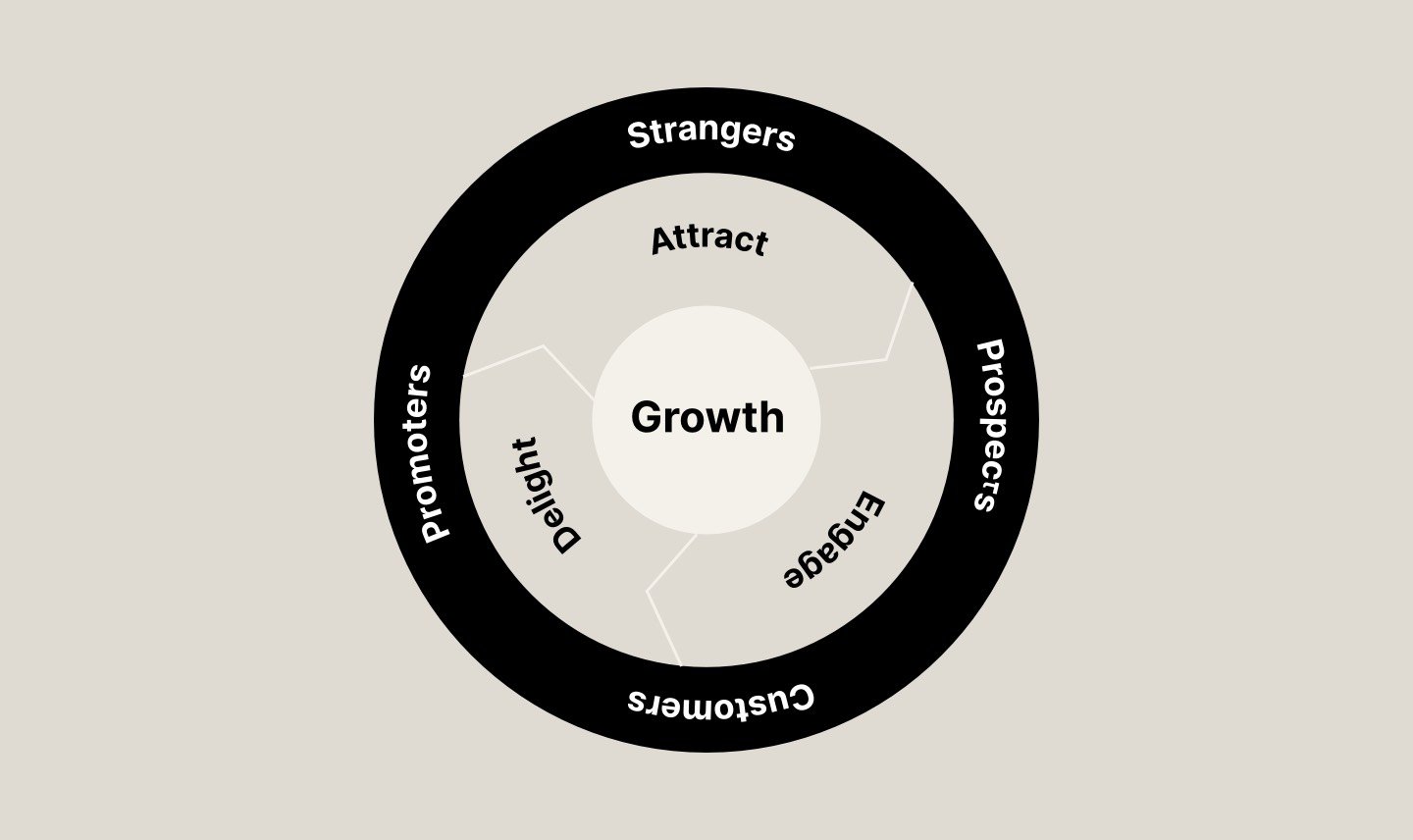Using inbound marketing to create measurable growth
While outbound marketing interrupts your audience with content they don’t always want, inbound marketing helps form new connections through targeted and relevant content.
As brands worldwide use inbound marketing as their primary marketing approach, marketers strive to meet audiences where they are. This is becoming increasingly more challenging as more brands create and produce consistent, high-quality content. On top of that, organic search is getting harder and more competitive, social media promotion is becoming less effective, and advertising spend – in general – is increasing.
For marketers, this means more creativity, and a smarter strategy to remain competitive.
Using inbound marketing to create trust and value
Trust is a valuable commodity – hard to build with customers and easy to lose. Consumers want security and make purchasing decisions by seeking out trusted sources of information.
According to a recent report by Edelman*, thought leadership is one of the most effective tools an organisation can use to demonstrate its value to customers during a tough economy – even more so than traditional advertising or product marketing, according to B2B buyers. What’s more, decision-makers expect high-quality thought leadership to offer a strong, data-backed point of view on how to succeed during a downturn. And, they report it can make a difference in winning their business.
For businesses needing to start by rethinking the way, they approach business growth – inbound marketing should be core to their digital marketing strategy.
What is inbound marketing?
Inbound marketing is a digital marketing strategy that focuses on creating and sharing valuable, relevant, and engaging content to attract and retain customers. Rather than relying on traditional outbound marketing techniques such as cold calling and advertising, inbound marketing helps brands establish a relationship with potential customers by providing them with useful information.
The goal of inbound marketing is to attract prospects to your business through digital channels such as social media, website content, search engine optimisation (SEO), and other content marketing tactics. Once you’ve captured the attention of potential customers, prospects are nurtured through the sales funnel with additional content and personalisation, tailored to their needs and interests.
Communication and commerce are evolving all the time – and customers today are more likely to do their own research online before making a purchase. They are more receptive to companies that provide helpful information and demonstrate expertise in their field – and by creating valuable content and building a relationship with potential customers, inbound marketing can help businesses establish trust, generate leads, and ultimately, drive sales.
Inbound marketing can be applied using the inbound marketing methodology:
- Attract: draw in the right people with valuable content and conversations that establish you as a trusted advisor with whom they want to engage
- Engage: present insights and solutions that align with their pain points and goals so they are more likely to buy from you
- Delight: provide help and support to empower your customers to find success with their purchases.
 The inbound marketing flywheel
The inbound marketing flywheel
Using an inbound methodology, your marketing, sales, and service teams all play a role throughout the attract, engage, and delight phases. For example, in the attract phase, digital marketing will likely play the biggest role through content creation, event marketing, social media and advertising, and your sales team can add force by engaging in social selling. Your customer service team can play a role by encouraging customers to make referrals and collecting feedback.
Creating an inbound marketing strategy
Attracting strategies
Inbound marketing strategies which attract your target audience are based on content strategies using top-of-funnel content. Top-of-funnel content focuses on your target audience, not on your business. Creating content that is aimed at your target audience's needs, interests, and pain points, can enable your brand to create broad awareness and engagement. Examples include credible tips, guidance, thought leadership, and industry best practices.
To attract your audience members on a deeper level through inbound marketing, optimize all of this content with an SEO strategy. An SEO strategy will require you to target specific keywords and phrases related to your products or services, the challenges you solve for customers, and the ways you help target audience members.
This will allow your content and information to organically appear on search engine results pages (SERPs) for your prospects.
Engaging strategies
Inbound strategies to engage your audience are aimed at building deeper relationships with your brand to move prospects through the consideration stage.
When using engagement strategies, inject information about the value your business will provide by helping to solve a problem or fill a need. To help prospects through the consideration stage, content should convince them that your product or solution is the best available.
Examples include product comparisons or calculators, product sheets or case studies. Engagement strategies should include how you handle and manage your inbound sales calls. This will ensure all deals focus on customer success – meaning, the value you provide is the right fit for your customers.





